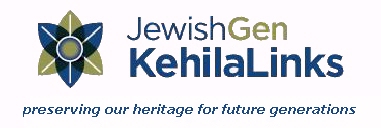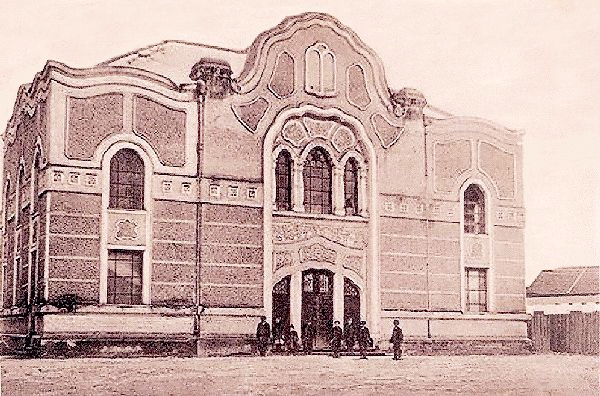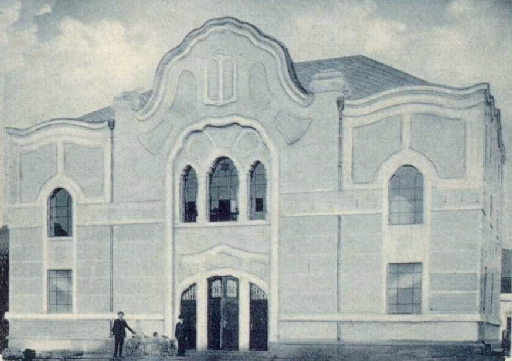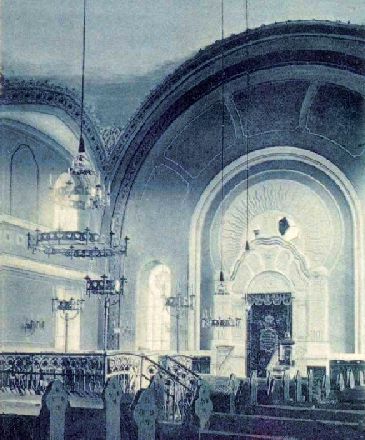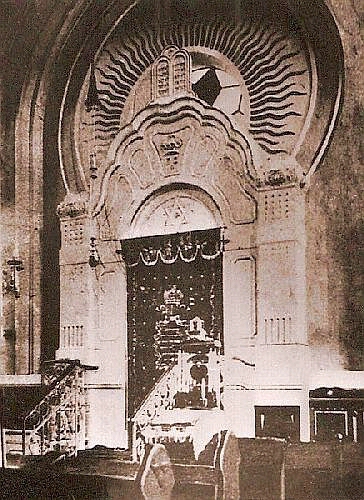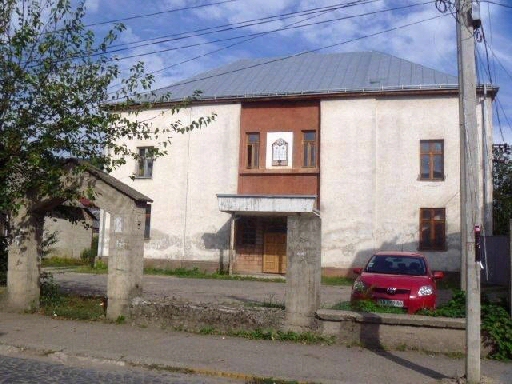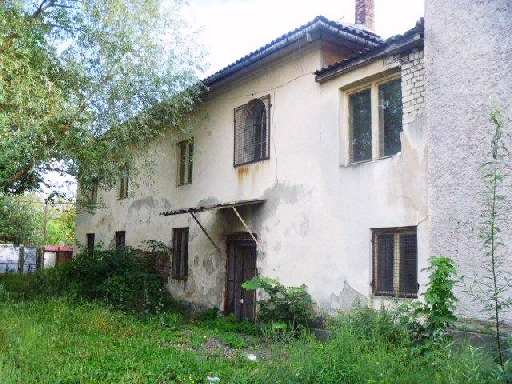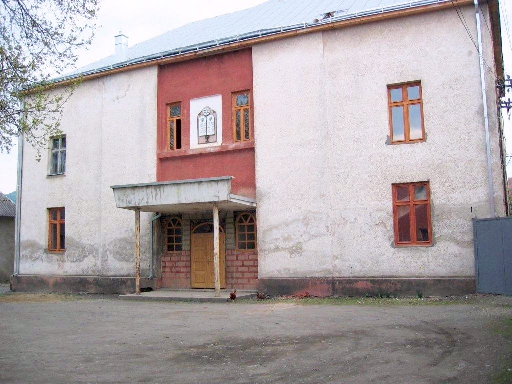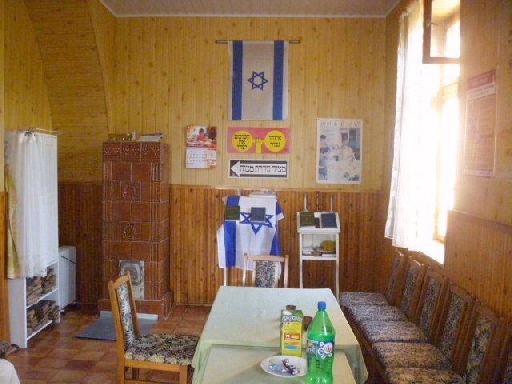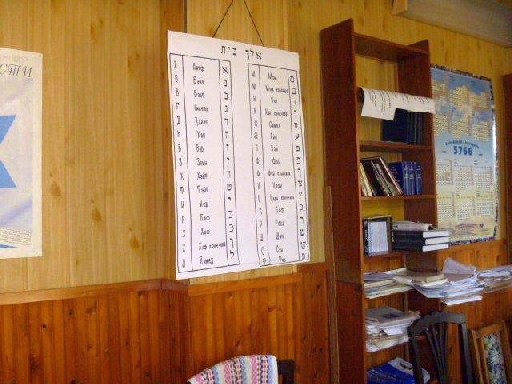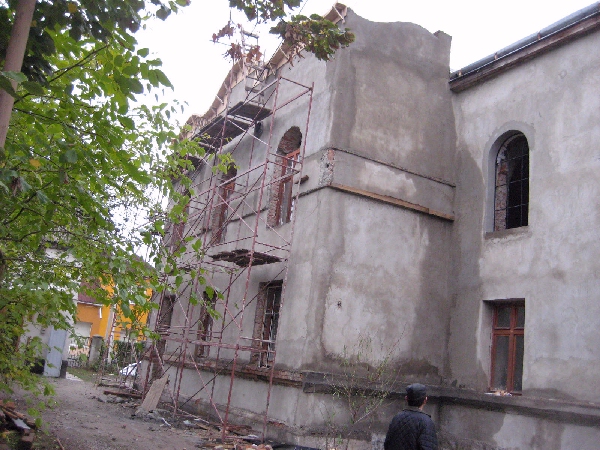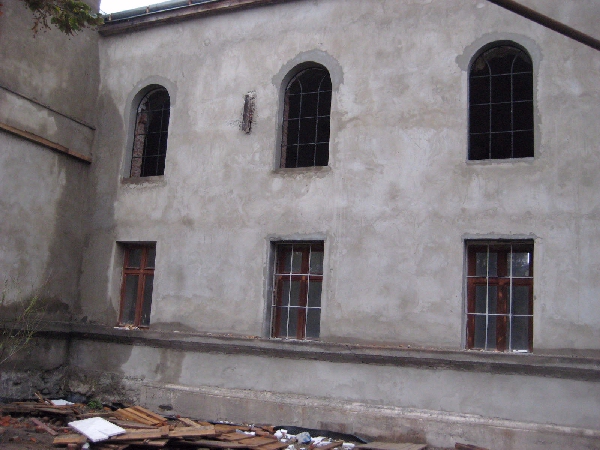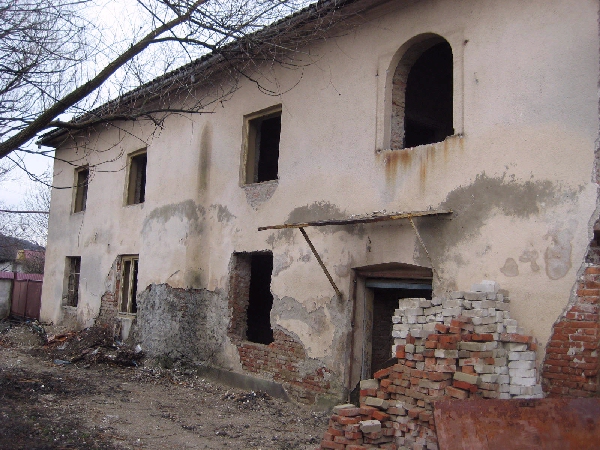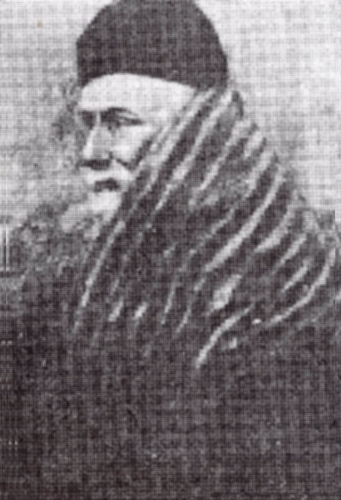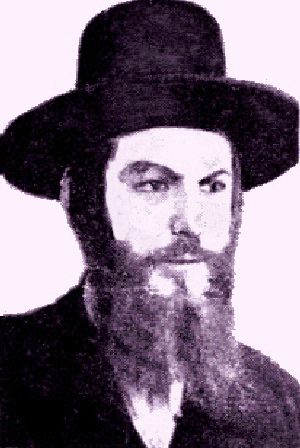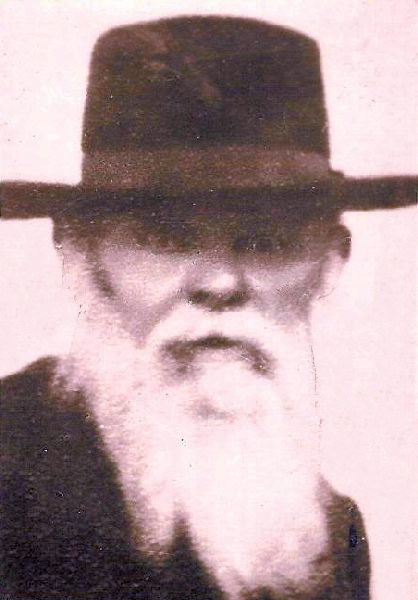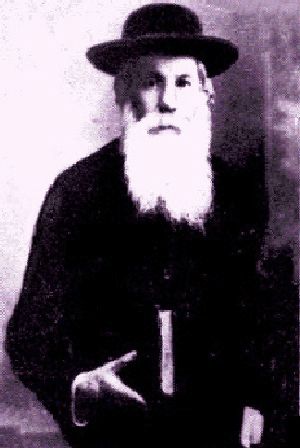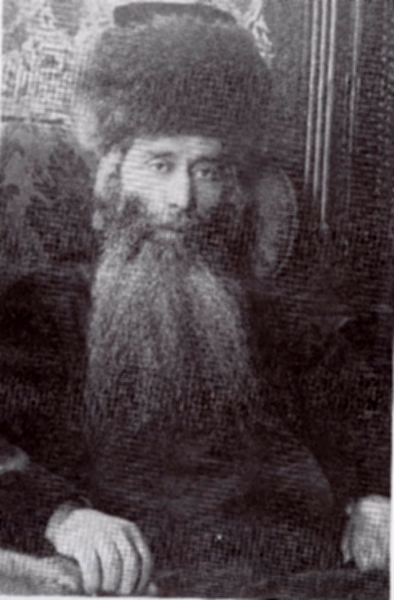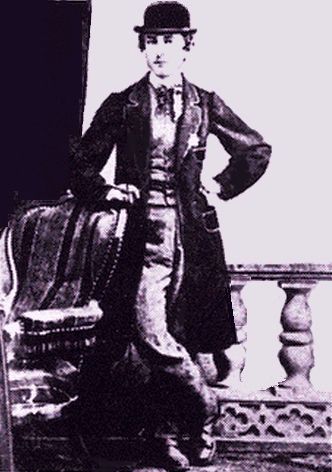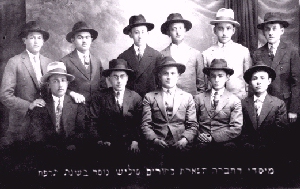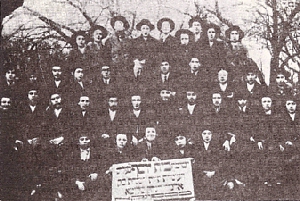|
| Vynohradiv Religious |
|
~ Religious Life
~
|
Vynohradiv was a vibrant village and
religion played an important part in the day-to-day lives of
Vynohradiv's Jews. The founding of the Jewish community is a result
of the Chmielnicki pogroms in 1648 when Jews fled Poland and
Ukraine. They found refuge in the villages and estates of the
baronial families, PERENYI, ACEL and FOGARSI. In 1768, two Jewish
families were living there.
|
At the end of the 17th century,
fighters of the Hungarian uprising, under the leadership of Franz
RAKOCZI II, organized pogroms against the Jews. Despite the law
forbidding the Jews to settle in Hungarian towns, Jews came here
from nearby villages , most of them from Rackowic. After the death
of the Kaiser Josef II, whose "edict of Tolerance" issued in 1782
granted certain priveleges and freedom of worship to the Jews,
there were attempts to banish Jews from the cities, but these
efforts failed and the Jews remained. They consecrated a house of
prayers, founded a Chevra Kadisha (burial society) and
appointed a shochet (ritual slaughterer) and a rabbi. The
first Rabbi of the Nagyszőllős community was Rabbi Yair KATZ ben
Yechiel, appointed in 1745 and died in 1780.
|
Around 1785-1786, the melamed
Rabbi BARUCH, father of the famous Rabbi Zalman SCHNEOUR, and
author of the Tanya (a book of eclectics), came here. He
died in 1792. After him, Rabbi Yehuda HaCohen HELLER (1794-1802),
author of "The Book of Doubts" about the Hoshen Mispat (The
fourth part of Shulhan Aruch by Joseph CARO),
officiated.
|
Rabbi Chaim Meyer ZEEV HaCohen
ZELENFREUND was rabbi during the years 1820-1832 and in the
following years, Rabbi Eleazer FALK, Rabbi Eleazer LIPMAN STEIN and
Rabbi Chaim Moshe HaCohen MOSKOVITS officiated. The rabbi who had
the greatest influence in shaping the structure of the community
was Rabbi Shmuel (Shmelke) KLEIN, the founder of the yeshiva
and the author of "Eternal Life." He died in 1874. His son, Rabbi
Pinchas Chaim KLEIN succeeded him.
|
The Jews of Nagyszőllős opposed the
reform movement which was spreading among the Jews of Hungary.
Israel ROIZ, the head of Jewish community of Nagyszőllős left the
Congress of Jewish Communities which convened in Budapest, in
1869-1869, because it was conducted in the reform
spirit.
|
At the end of the 19th century, the
yeshiva in Nagyszőllős was among the 31 yeshivoth recognized
by the authorities as preparatory schools for rabbis. The students
were obliged to study secular objects too at the secondary school
level.
|
The Jews of Nagyszőllős and the
surrounding area supported the Jewish community in Eretz
Israel and played a part in the founding of the Kollel
(talmudic academy) named "Munkács." Rabbi Pinchas Chaim KLEIN was
chosen as a vice-president of the Kollel. After his death in 1923,
Rabbi Joseph Nehemia KORNIZER was his successor.
|
In 1925, when Rabbi KORNIZER was
called to serve in the rabbinate in Cracow, Rabbi Shlomo Israel
KLEIN, the son of Rabbi Pinchas Chaim served as rabbi, the last
Rabbi in Sevluš. The official community leaders were Abraham KLEIN,
Menachem Mendel GUTMAN (1891-1920), Shalom STEINBERGER, Meyer
KROIS, and Yechiel ROIZ.
|
During the period of Czechoslovakian
rule, between the two world wars, the following served as lay
leaders of the Sevluš community: Meyer Shalom REIZMAN, Joseph
POLLAK, Moshe SCHWARTZ, Moshe FARKASH, Moshe KRAMER, Moshe JOSEPH,
Mordechai EISENBERG, Dr. Yacov LEISMAN and Pinchas
WUERZBERGER.
|
The central synagogue was the large
synagogue, built in 1904, on Kiraly street. The Talmud study house
was founded by Abraham KLEIN. With the increase in the hunger of
congregants who prayed according to the Sephardi custom, the
Ashkenasi version was replaced by the Sephardi one. In addition,
they established a chassidic talmud study house, a ritual bath for
daily immersion and organized a Mishnah study group. In the
large synagogue and in the Beth Midrash Mahziki Torah where
Rabbi SHMELKE prayed, they continued to pray according to Ashkenazi
tradition. There was also the prayer-house of the Admor Rabbi
Israel Menachem EHRLICH and a few other private places of prayer.
The community offices, ritual bath, ritual slaughter house,
synagogue and the homes of the rabbi, dyan (judge),
shochet and custodian were all located in the courtyard of
the great schulhof (synagogue).
|
The members of the burial society also
visited the sick and approved medicines and firewood for the needy.
In the local government hospital, expanded in 1935, there was a
Kosher kitchen under the supervision of the burial society.
Additional organizations active in Sevluš were the "Committee for
Hospitality of Visitors," Psalms Society," "Seekers of Justice
Society," women's organizations, and the "Elite Young Mens
Society." During the first world war, the community organized a
kitchen to provide meals for the Jewish soldier prisoners from
Russia and the Jewish refugees from Galicia.
|
The Chassidic admorim rabbis in the
city were: Rabbi Israel Mendel EHRLICH; Rabbi Chaim Meyer Yechiel
HOROWITZ; the rabbi of "Rzeszow," the spiritual leader of the
Chassidim; Rabbi Yitzchak Isaac WEISS, the admor of Spinka and the
author of the "Field of Yitzchak" who had come to Sevluš from
Munkács, organized a yeshiva and magnificent synagogue. Many
Chassidim from the whole country came to his court.
|
Until the end of World War I, there
were only private teachers in the city. Rabbi Moshe Zeev KATZ, who
taught Talmus Rashi and other commentaries, also taught
Jewish religious studies in the government schools, a Talmud
Torah (religious school) with five classes was started after
the war through the initiative of Moshe SCHWARTZ, Rabbi Shmelke
KLEIN Tzvi MARKOWITZ, Yuhuda HOLLANDER and others. Some of them
also founded a Beth Yaakov (a school for girls). The
Chassidim had a separate Talmud Torah.
|
During the period of Czech rule, the
Jews were granted "minority rights." The teachers Yair RICHTER and
Shlomo Yaacov GILAD taught Judaic studies to Jewish students in the
government schools. There were also yesishvot administered
by Rabbi Shlomo KLEIN; the rabbinical judge Jonathan BENJAMIN, the
author of the "Soul of Yonatan" and Rabbi Shmuel
GREENWALD.
|
Taking advantage of the "minority
rights," some Hebrew schools were founded. In 1922, a Hebrew school
was organized in Sevluš. During the first year, there were 150
pupils. Some of the young people continued their education at the
commercial high school or in the trade schools. Some studied at the
Hebrew gymnasium in Munkács or in the local yeshivot or in
Slovakia and Hungary.
|
Most of the early Jewish settlers were
inn-keeper, petty merchants, butchers and craftsmen. Most of them
were poor and the "tolerance tax" introduced by the Empress Maria
Teresa made their economic position even more difficult. Relief
came with the introduction of a more tolerant policy by Emperor
Joseph II when Jews could enter new fields of
employment.
|
The Jews specialized in the production and export of wine, especially to Galicia, during the grape harvest, many admorim came to the city.
|
At the end of the 19th century and the
beginning of the 20th century, there was a substantial improvement
in the economic situation of the town's Jews. Some Jews purchased
large tracts of land: among them A. KLEIN, the head of the
community and the founder and director of the Ugocsa Bank. During
the twenties, the joint distribution committee organized a credit
bank. Some Jews owned flour mills. factories, textile stores and
printing houses. Jews were wholesale grain merchants, directors of
financial institutions and building contractors. Most of the
doctors the of district, veterinarians, lawyers and the owner of
the first movie house were Jews. Many Jews were wealthy and made
efforts to gain positions of influence in the town, but there were
also workers, coachman, and many needy families.
|
The Jews of Nagyszőllős made efforts
to be part of the Hungarian society and in 1848, during the
Hungarian uprising, four Jews fought on their side. After
emancipation of the Hungarian Jews in 1867, many Jews filled
important positions. During the period of Czech Republic, Noah
Jacob DEUTSCH was the editor and publisher of the Hungarian
newspaper "Ugocsa." He was also chairman of the United Jewish Party
in the years 1920-22. In the municipal elections of 1921, eleven
representatives of the Jewish party were elected to the council
that contained 36 members. Eliahu WEISS was elected deputy
mayor.
|
Zionist activity in the town began
with the founding of the "Love of Zion Society" by Moshe GUTMAN in
1913. When World War I broke out in 1914, most of its members were
drafted into the army. After the war, Zionist activity was renewed.
An organization called "Unity" included Zionists from all parties.
Public lectures were sponsored and money collected for the Jewish
National Fund. A branch of W.I.Z.O. and a youth group for girls
called "Miriam" were active. In June, "Unity" split up and branches
of the "Mizrachi" and Revisionist parties were formed. In 1918,
Moshe GUTMAN was elected a member of the Zionist Executive Board of
Hungary. After the war, he organized Zionist groups in Carpathian
Rus', joined the "Mizrachi" and was its delegate to the 12th
Zionist Congress which took place in Karlsbad. Another active
Zionist was Meshullam Fish WEISS.
|
The first training farm for pioneers
opened in 1923 by the Mizrachi Chalutz Movement on the estate of
Menachem GUTMAN. In 1926, a training camp was organized in the
brick-yard of GLICK-GUTMAN. In 1933, forty pioneers from the
"Hechalutz" movement in Germany came to the estate of the SZTEINER
family in Blankatanya. Another twenty German Jews from the
religious pioneer movement came to the farm of Simcha GREEN in
Sirma. In 1937-1938, twenty pioneers received training at the
government tobacco factory. In 1940, twenty members of the
"Mizrachi" pioneers learned the art of basket-weaving.
|
There were also branches of many youth
movements such as "Hashomer Kadima," "Hashomer Hatzair," "Betar,"
"Hechalutz," and a youth movement of "Hamisrachi." The youth
movements sent their members to training farms and factories and
many emigrated to Eretz Israel. Yitzchak BLOCH of Sevluš was
assistant to the leader of the Betar in Czechoslovakia. In later
years, he served as the secretary of the Tel-Chai Fund in London.
The sports club Maccabi supported a football team.
|
In many of the small communities that
were affiliated to the Sevluš rabbinate, were Jews that lived there
many years before Jews were allowed to settle in Sevluš. Most of
the Jews were in the wine trade with small tracts of vineyards or
retail merchants. The Rabbinate of Sevlušmade efforts to provide a
judge and teacher for every community.
|
In 1938, there was 8,000 Jews living
in Sevluš and the surrounding area.
|
Sources (portions):
The Encyclopedia of Jewish Life Before and During the
Holocaust, (2001), pp. 269-270. |
|
|
~ Synagogues ~
|
(Click the image below to view a larger
image.)
|
~ Vynohradiv Synagogue I
~
Postcard: Courtesy of Josef KATONA,
Israel
|
|
|
|
(Click the images below to view a larger
image.)
|
Vynohradiv Synagogue II
Postcard: Photographer unknown
|
|
Vynohradiv Synagogue III
Postcard: Photographer unknown
|
|
|
|
(Click the images below to view a larger
image.)
|
Vynohradiv Synagogue IV
Postcard: Courtesy of Josef KATONA, Israel
|
|
Vynohradiv Synagogue V
Postcard: Courtesy of Josef KATONA, Israel
|
|
|
|

